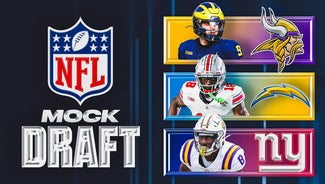





































































































































Point/Counterpoint: Emmitt vs. Jerry
18,355.
This is the figure that will be most celebrated Saturday when Emmitt Smith is inducted into the Pro Football Hall of Fame. No running back in NFL history has ever amassed so much rushing yardage, not to mention three Super Bowl rings to boot.
Spare the customary cliches – records are meant to be broken, never say never, etc. As I researched such greatness to reinforce my belief his statistical standing is safer than even fellow 2010 Hall of Fame member Jerry Rice’s formidable receiving marks – sorry, Nancy Gay – there was a smaller digit that made an even bigger impression than Smith’s final tally.
17.
That’s the total number of carries Dallas Cowboys fullback Daryl “Moose" Johnston tallied as Smith’s primary backup during the 1991 season. Mull that over. Seventeen! Any time Dallas wanted to pound the football, Smith’s name was called – again and again and again.
Such reliance didn’t just end after his second NFL campaign. For 13 years, the Cowboys leaned on Smith to tunnel through opposing defenses like a football version of fictional railroad worker John Henry. The biggest difference between the two? Smith somehow didn’t die of exhaustion.
During his first seven NFL seasons, Dallas had six different rushers finish as Smith’s top sidekick. With the exception of Johnston, none of the others – Tommie Agee, Curvin Richards, Derrick Lassick, Lincoln Coleman and Sherman Williams – is more than a footnote in league history.
Between 1990 and 1996, that group finished with 375 carries. In comparison, Smith alone amassed 377 rushes in 1995.
And he kept on ticking.
Year after year, Smith continued to gain on the late Walter Payton before breaking his NFL rushing record in 2002. Even during his 15th season, a 35-year-old Smith still had enough juice to post 937 yards and nine touchdowns in 15 starts with the 2004 Arizona Cardinals.
Such freakish production and longevity kept setting the bar higher and higher. The closest challenger now for his mark – LaDainian Tomlinson – is just 5,685 yards away, but it may as well be 50,000. Discarded by San Diego during the offseason, Tomlinson, 31, already has shown the signs of decay that afflict most running backs over 30. He won’t last much longer.
Changes in rules and offensive philosophy have made Smith’s record untouchable. Defensive holding and interference penalties are far more common now than during Smith’s heyday. This has encouraged more aerial attacks. Teams passed on 54.7 percent of the snaps last season compared with 52.1 when Smith entered the NFL in 1990.
Of the league’s top 10 active rushers, only two – Washington’s Clinton Portis and St. Louis’ Steven Jackson – are in their 20s. The concussion-hampered Portis, 28, is coming off his worst NFL season. He is expected to split snaps with fellow graybeards Larry Johnson and Willie Parker in 2010. Jackson, 27, is spryer, but he, too, already exhibits the wear and tear inherent in being a workhorse rusher.
The fashionable run-by-committee philosophy also limits how much damage most individual backs can do in a single year. Twenty-one teams in 2009 had two rushers with at least 90 carries – a luxury Smith enjoyed only three times in 15 seasons (his lone year as a backup came with the 2003 Cardinals). Another three squads – New England, Washington and Philadelphia – used a group rushing approach.
The NFL has some impressive young RBs, most notably Tennessee’s Chris Johnson and Minnesota’s Adrian Peterson. But even if both were able to avoid injury and continue their torrid paces, Smith’s mark wouldn’t fall for another 11 seasons.
During a recent media conference call, Smith said he thought his rushing record would at least someday be “approached.” He reminded skeptics that it took 18 seasons for Payton’s all-time mark to fall.
Some believe the NFL’s pending expansion to an 18-game season will pave the way for a new rushing kingpin. No dice. While the deck is stacked for career receiving and passing records like the ones held by Rice and Brett Favre to ultimately fall, the chance that Smith gets surpassed can be summarized in one final numeral.
Zero.
Alex Marvez voted for the Pro Football Hall of Fame classes of 2009 and 2010.
POINT/COUNTERPOINT: THE CASE FOR JERRY RICE

2024 NFL Draft odds: Vikings, Patriots are clear favorites to draft J.J. McCarthy

2024 NFL jersey redesigns: Browns latest team to make change

2024 NFL Draft safety rankings: Pac-12 prospects make up half of the top 10
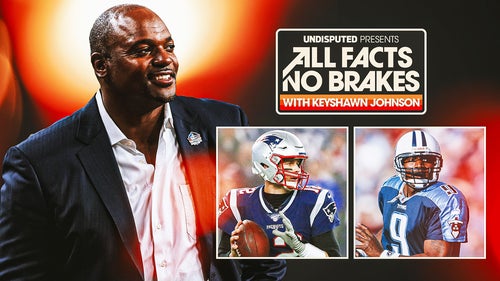
Dwight Freeney says Tom Brady was one of the toughest NFL QBs for him to sack
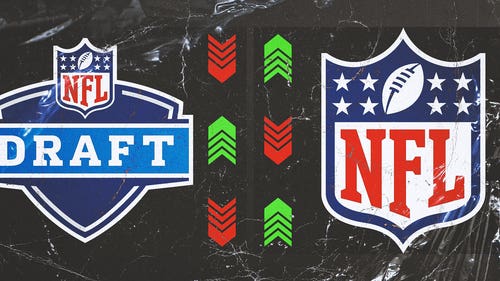
The art of NFL Draft misdirection: How teams use subterfuge to hide their plans

2024 NFL Schedule Release: Date, when does the season start?
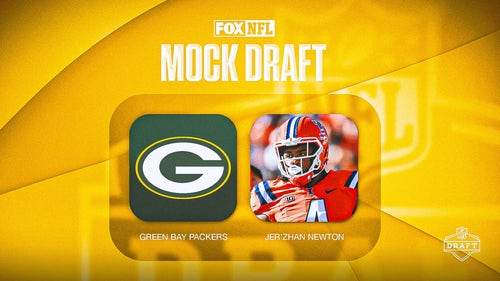
2024 Green Bay Packers mock draft: Loading up on the defensive side
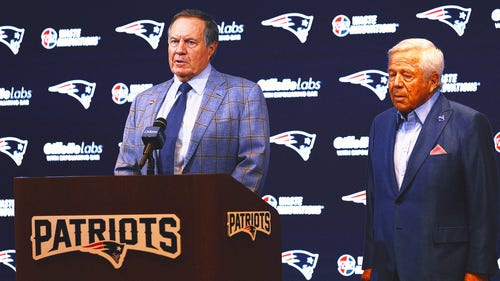
Robert Kraft reportedly warned Falcons 'not to trust' Bill Belichick

2024 NFL Draft prospect rankings: Top 100 led by Caleb Williams


2024 NFL Draft odds: Vikings, Patriots are clear favorites to draft J.J. McCarthy

2024 NFL jersey redesigns: Browns latest team to make change

2024 NFL Draft safety rankings: Pac-12 prospects make up half of the top 10

Dwight Freeney says Tom Brady was one of the toughest NFL QBs for him to sack

The art of NFL Draft misdirection: How teams use subterfuge to hide their plans

2024 NFL Schedule Release: Date, when does the season start?

2024 Green Bay Packers mock draft: Loading up on the defensive side

Robert Kraft reportedly warned Falcons 'not to trust' Bill Belichick

2024 NFL Draft prospect rankings: Top 100 led by Caleb Williams
